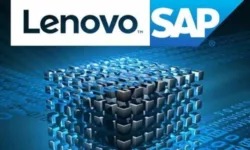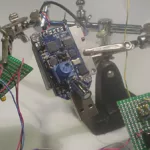It is kind of amazing how much Lenovo has changed in the last 15 years or so. In 2001, I doubt most of us had even heard of the company and then they bought the IBM PC product group, along with one of the most iconic PC brands; ThinkPad. Most recently they bought IBM’s System x x86 server business, and on a call last week SAP confirmed that Lenovo sells over 50% of the solutions for SAP’s HANA.
SAP Hana is one of the leading analytics engines and it has been designed and tuned to run on x86 platforms. These implementations tend to be large and sell well into the enterprise space which, outside of PCs, hasn’t been a Lenovo strength historically. Consider also that IBM’s System x business was under resourced to a near starvation level and carried massive IBM overhead so it is wonder it even operated let alone came to dominate a critical market segment like SAP HANA.
I think it was the result of three things; applied stress, an unusually close relationship with SAP, and Intel.
Applied Stress
Have you ever wondered why World Wars drive such massive advancements? World War I started in trenches and with horses and ended with airplanes and tanks. World War II started where WWI left off and ended up with ballistic missiles, jets, radar, and atomic weapons (kind of amazing we survived).
There are also examples of businesses and technologies that showcase similarly massive changes over time. How about Apple, how were they able to three times turn the consumer market first with MP3 players (iPod), they with Smartphones (iPhone), and finally with tablets (iPad)? But since Jobs died, why has Apple kind of become like most other tech companies.
The theory is applied stress that is when you really push people hard and put them at risk, they are likely to take far bigger risks that can lead to huge breakthroughs. In a typical company, the big risk is making a bad bet and losing your career in the process so the older the firm the more likely it won’t or can’t innovate.
In cases like that, the risk of innovation is greater than the benefit. But in a war where losing leaves you dead or in effective slavery, the mix is different. Compared to dying, losing your career is trivial (not to mention that if what you do at least looked promising, you don’t lose your career either). At Apple, Jobs made it clear to employees that he expected them to meet his expectations. Even though he regularly asked them to achieve “impossible” things, people stepped up.
In IBM, the deck was stacked against the System x group. Since it depended on Intel, not IBM technologies, it was starved for budget, and every advancement was shared aggressively with the far better supported Power and Mainframe products. But failure meant the group would be disbanded and jobs lost, likely massively, so the folks stepped up. I think this a part of why System x solutions for SAP Hana have been so successful.
Relationship with SAP
Part of the result was that in a hostile environment you tend to look for friends and SAP who needed partners became one of System x’s allies. As a result, rather than the typical hardware/software partnership where both sides tend to think the other is staffed with idiots, the IBM folks were driven to excel with the SAP folks and they created an unusually tight relationship. The System x platform became the reference architecture for SAP the partnership was so tight. That transferred to Lenovo, who already had a strong history of deep partnerships (largely because they lack the deep management structure of a large firm reducing their bureaucracy risk).
This deep relationship is actually potentially stronger than if the two firms were parts of the same company because the common fight for resources. Partly as a result, System x hardware is unusually well tuned for the software leading to effective market dominance. Lenovo is heavily motivated to keep this relationship tight because this success is a showcase for the firm’s capabilities and losing this advantage would be a critical blow to their own strategic efforts. When SAP speaks, Lenovo listens and the end result is far stronger offerings.
Intel
Finally, we have Intel whose technology provides the foundation for the overall effort. The IBM x86 server group looked to Intel for help and Intel was motivated to assure they got what they needed, especially given the competition from IBM Power. The end result is that this group inside IBM was driven to be even closer to Intel and given SAP Hana is heavily resourced as an Intel strategic initiative, we got a force multiplier creating a unique 3-way partnership with Intel being a far more integrated part of the solution than they otherwise would have been.
This undoubtedly resulted in design help and advice flowing both ways and a level of system tuning unmatched in the market which is why the Lenovo SAP Hana solution now dominates this segment. They say good things come in threes and this is a perfect example of when that has been true.
Wrapping Up:
Something like SAP Hana should be out of Lenovo’s reach because of its target audience and scale. But due to a series of events starting with the massive stress the old IBM x86 group was put under and ending with the unusually strong partnerships with SAP and Intel, the end result isn’t just that they are players, but that they are dominant.
This isn’t because they have more or better marketing, more or better sales people, or are the most powerful enterprise vendor in the market. It is because the trio’s efforts resulted in a solution that is so much better than competitors’ offerings that it is something to sit up and take notice of. Overall, the common success enjoyed by Lenovo, SAP and Intel exemplifies how sometimes putting stress on a group that otherwise can’t win is the only way to assure it does. Something to think about this week.








